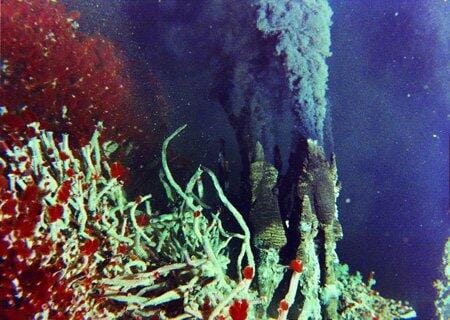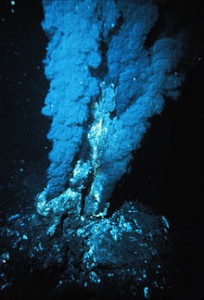A Deep-Sea Bacterium Against Climate Change

 An organism that lives at the bottom of the ocean could help in the fight against climate change. The bacterium, Thiomicrospira crunogena, lives in extremely hot environments and produces an enzyme -carbonic anhydrase- that can convert carbon dioxide into harmless products. These two characteristics make it a good candidate for industrial use. The study, by researchers from the University of Florida, were published in the journals Acta Crystallographica D: Biological Crystallography and Chemical Engineering Science.
An organism that lives at the bottom of the ocean could help in the fight against climate change. The bacterium, Thiomicrospira crunogena, lives in extremely hot environments and produces an enzyme -carbonic anhydrase- that can convert carbon dioxide into harmless products. These two characteristics make it a good candidate for industrial use. The study, by researchers from the University of Florida, were published in the journals Acta Crystallographica D: Biological Crystallography and Chemical Engineering Science.
Carbon dioxide is a greenhouse gas. Fossil fuel has been burned since the industrial revolution; as a result, atmospheric CO2 concentration has risen dramatically, contributing to global warming. Moreover, CO2 is partly responsible for ocean acidification by dissolving in water to form carbonic acid. Carbon sequestration strategies have been devised to capture CO2 from the atmosphere and store it, thus mitigating its negative effects. Tweaking nature, biological, chemical and physical methods of CO2 sequestration have been conceived. The last one comes from researchers of the University of Florida, who propose to use a deep-sea bacterium. Thiomicrospira crunogena was isolated from hydrothermal vents, fissures in the earth crust that emit geothermal water at temperatures as high as 460 ºC. Extremophilic bacteria are very useful for green chemistry: their protein machinery is adapted to work in severe conditions of temperature, pressure or salinity, the same circumstances found in bioreactors where organisms are used to catalyze chemical transformations more efficiently an ecologically than with traditional methods. T. crunogena produces carbonic anhidrase, an enzyme that accelerates the conversion of CO2 and water to bicarbonate and protons.
Using E. coli to produce carbonic anhidrase
T crunogena extraction from the bottom of the ocean is costly, so the researchers decided to genetically modify E. coli for heterologous production of the enzyme. E. coli is the most common host organism for protein production in research and industry, but even its yield is not enough to produce enough carbonic anhidrase to process CO2 on an industrial scale, given that the enzyme is not very efficient. The next steps at McKenna´s research group will be focused in artificially directing the evolution of the enzyme towards higher efficiency. Once this is achieved, the enzyme will be ready for industrial use. The researchers have already worked out a strategy for efficient CO2 sequestering by carbonic anhidrase. A biorreactor would be filled with solvent and lined with the enzyme; the flue gas would pass through the solvent and the CO2 would be converted into bicarbonate, which could then be used to produce baking soda or chalk.
Source: UFHealth
